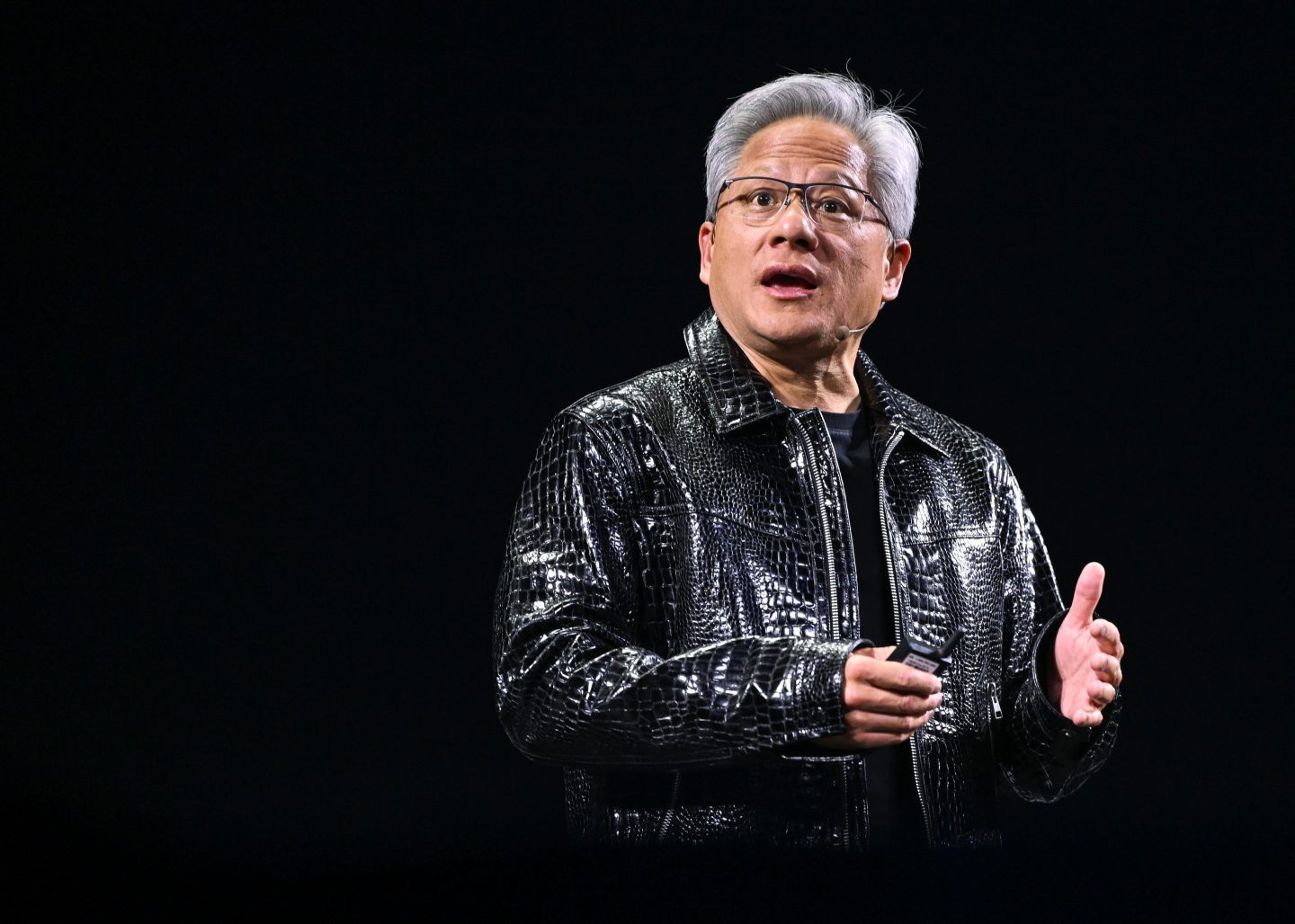


+13.000 top-tier remote devs

Payroll & Compliance

Backlog Management

Artificial intelligence (AI) and robotics are reshaping industries at an unprecedented pace, and at the heart of this transformation is one key driver: collaboration. No company, no matter how innovative, can do it all alone. The complexities of advancing AI and robotics demand strategic partnerships that pool resources, share expertise, and tackle challenges as a united front.
One name that has become synonymous with collaboration in AI is Jensen Huang, the founder and CEO of Nvidia. Known for his visionary leadership, Huang has made it clear that partnerships are not just optional but essential.
During his keynote at CES 2025, Huang spoke to an audience of thousands, emphasizing the role of partnerships in pushing the boundaries of what AI and robotics can achieve.
In this blog post, we’ll dive into the success story of Nvidia and uncover how businesses can draw lessons from their collaborative approach to accelerate their own AI and robotics initiatives.
AI and robotics development are incredibly complex undertakings. There are many challenges, from making neural networks that can make decisions right away to creating robots that can move through changing environments. This complexity underscores why no single organization can have all the answers—or resources.
Strategic collaborations allow companies to combine their strengths, fostering an ecosystem where ideas flourish. By pooling resources, companies can share the financial burden of expensive R&D projects.
Expertise, too, becomes a shared asset. For example, a robotics company may excel in hardware development, while a partner specializing in AI algorithms can optimize the software side.
The global impact of these collaborative efforts is hard to overstate. Breakthroughs that once took decades now take years, if not months. When Nvidia announced its Cosmos platform —an open-license tool that integrates generative models and simulations—it wasn’t just about Nvidia’s capabilities.
It was about enabling robotics and autonomous vehicle (AV) companies like Toyota, Uber, and Agile Robots to create cutting-edge solutions faster and more efficiently.
Nvidia's journey has been incredible, but what makes the company different is its ability to work well with others. Nvidia doesn’t just build GPUs; it creates ecosystems where innovation thrives. And their partnerships tell a powerful story.
Take Nvidia’s collaboration with Toyota . By integrating the Nvidia DRIVE AGX platform into its next-gen vehicles, Toyota is leveraging Nvidia’s hardware and AI capabilities to accelerate autonomous driving technology.
Another standout example is Nvidia’s partnership with Aurora, a leader in self-driving technology. Together, they're pushing the limits of AV simulation by combining Aurora's knowledge of autonomous software with Nvidia's Omniverse platform. Omniverse creates fake data for training AI models. This synergy has resulted in faster, safer, and more cost-effective ways to develop AV systems.
Nvidia also collaborates with Continental, a global automotive supplier, to bring AI-driven solutions into mass-production vehicles. With Nvidia’s GPU-powered AI platforms, Continental has been able to enhance vehicle safety systems and bring next-gen driving features to life.
These partnerships are transformational. Nvidia’s role as an enabler allows its partners to achieve what would be nearly impossible on their own.
What makes collaboration so powerful in AI and robotics? For one, it accelerates innovation cycles. By working together, companies can share insights, test hypotheses faster, and bring solutions to market more quickly.
Nvidia’s Cosmos platform, for instance, provides a shared foundation for robotics developers to simulate and refine their systems without building models from scratch.
Partnerships also reduce costs and risks. Developing AI models or training autonomous systems is incredibly resource-intensive. By splitting these costs among partners, companies can de-risk their investments and focus on what they do best. Nvidia’s ability to provide open-source tools, like Cosmos, has been instrumental in democratizing access to cutting-edge technologies.
Scalability is another major advantage. AI solutions often require significant computational power, and Nvidia’s hardware is built to handle these demands. When partners tap into Nvidia’s platforms, they gain access to the infrastructure needed to scale their operations, whether they’re training digital humans or developing autonomous fleets.
If Nvidia’s success has taught us anything, it’s that collaboration doesn’t happen by accident—it requires strategy. Here’s how you can create your own roadmap for AI partnerships.
Start by evaluating your company’s strengths and weaknesses. Are you strong in software but need help with hardware? Do you have a robust R&D team but lack access to a scalable infrastructure? The right partner will complement your capabilities and fill critical gaps.
Partnerships thrive in environments of trust, transparency, and shared vision. Encourage open communication and create frameworks for knowledge-sharing.
What do you want to achieve through this collaboration? Whether it’s developing a new product, scaling an existing solution, or entering a new market, having a clear roadmap ensures that both parties are aligned and focused on success.
Creating successful partnerships involves not only identifying the right individuals but also maintaining relationships, collaborating on shared goals, and being open to mutual growth.
Nvidia’s journey shows how the future of AI and robotics lies in collaboration. By working together, companies can overcome the challenges of developing complex systems, accelerate innovation, and create scalable solutions that benefit entire industries.
If you’re ready to take the next step in your AI journey, contact The Flock today. We specialize in on-demand talent and software team management services, helping businesses navigate the complexities of AI and robotics development with confidence.
Collaborations play a crucial role in the development of AI and robotics because they allow companies to address challenges that are too complex or resource-intensive for one entity to manage alone.
By working together, companies can combine their strengths, leveraging diverse expertise and infrastructure to push innovation forward.
Collaboration also significantly reduces risks and costs. Developing AI models and robotics systems often requires heavy investment, and sharing those expenses across multiple organizations eases the financial burden.
Moreover, partnerships often result in standardization and interoperability, which are critical in industries like robotics, where different systems need to communicate seamlessly. Through collaboration, businesses can overcome limitations, innovate faster, and create scalable solutions that benefit multiple industries.
Nvidia’s Omniverse platform is a revolutionary tool for fostering collaboration across industries. It serves as a shared virtual workspace, enabling developers, engineers, and designers to work together in real-time.
Omniverse supports the creation of synthetic data, the simulation of real-world environments, and the development of scalable AI models, all within a single ecosystem. This level of integration allows teams to innovate without being constrained by geographic or technological barriers.
AI collaborations have a transformative impact across several industries. In the automotive sector, for instance, partnerships like those between Nvidia and Toyota are driving advancements in autonomous vehicles by integrating AI platforms like DRIVE Hyperion.
These collaborations enable safer and more efficient self-driving systems. Similarly, in healthcare, AI partnerships are revolutionizing diagnostics, drug discovery, and patient care. By combining expertise, healthcare providers and AI developers are creating solutions that can detect diseases earlier and improve outcomes.
Identifying the right partner for an AI project begins with understanding your organization’s specific needs. A company should evaluate its strengths and weaknesses to determine where partnerships can fill critical gaps.
For instance, a business strong in software development but lacking hardware expertise would benefit from partnering with a hardware specialist. This self-assessment provides clarity on what to look for in a collaborator.
Researching potential partners is equally important. Companies should review case studies, client testimonials, and their prospective partner’s technological capabilities to ensure alignment.
Cultural and operational compatibility also play a crucial role. Successful collaboration requires more than technical expertise; it depends on shared goals, open communication, and a commitment to the partnership.
Leadership is the foundation of any successful AI collaboration. Visionary leaders understand the importance of creating an environment where collaboration can thrive.
Leadership sets the tone for partnerships by promoting transparency, aligning resources, and encouraging innovation. When leaders clearly define roles and responsibilities, they ensure that everyone involved in the collaboration is working toward a shared goal.

+13.000 top-tier remote devs

Payroll & Compliance

Backlog Management